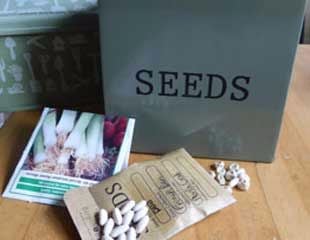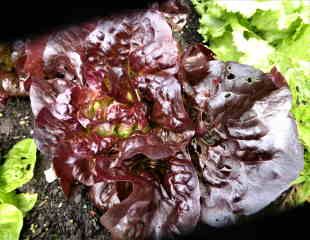How to Protect Your Vegetable Garden from Extreme Heat
Posted on
 |
 |
|
Spring is just around the corner, an important time for the sowing of seeds and the growing of new crops of vegetables. Produce like broad beans, beetroot, garlic and shallots are planted, ready for the conditions brought by the warmer months. But what is becoming more of a worry is the rise of temperatures due to climate change and the damage this can bring. The unbearable heat can wilt the leaves of plants and they can literally be scorched and burnt in the sun. Here we give you some tips to help combat this: Preparation is Key… You’re likely to know when a heatwave is nigh as it will no doubt be warned of on the news. If you grow your own produce, it’s important to keep a closer eye out on the weather forecast, allowing you to help prevent the occurrence of any damage. Keep Healthy Plants Ensuring your plants are given the best chance at survival can be achieved through providing them with the healthiest conditions to grow in where you can. Having rich, quality soil in raised beds and using organic fertiliser will promote access to important nutrients. Planting in thoughtfully spaced triangles will prevent over crowing and actually save you time – as the vegetables will successfully compete against any weeds growing between. Keeping an eye on your garden as often as you can, will allow you to quickly notice and fix anything that doesn’t seem quite right. Creating Shade When the sun does arrive, and it is at its hottest – it is advisable to cover your plants and vegetables with any material which can block out and reduce exposure. This can be done using plants stakes and a dark cloth, by stretching it to cover the vegetables but leaving openings at each end to allow air circulation - you could also cover the plants directly using a lightweight muslin cloth. Alternatively, portable structures like Garden & Camping gazebos can be placed in various positions to protect the crops. You could even look at planting larger greenery like sunflowers, to give a natural source of shade to your plot. Controlled Watering During a heatwave, it is best to water plants either by hand using a watering can or with a soaker hose or drip line. This is to ensure that the water is reaching the soil beneath and should be done early in the morning, giving the vegetables the moisture they need to bear the heat. By using sprinklers, the water is likely only reaching the top leaves and not the root, even evaporating in its transit or settling and consequently causing scorching and burn. It is also important to remember to still water shaded areas as they too require hydration. Using Mulch A great way of cooling the soil is by using varieties of mulch. Biodegradable mulches include garden compost, leaf mould, spent mushroom compost, processed conifer bark or wood chippings. These help to improve the fertility and the structure of the soil. You could alternatively opt for non-biodegradable mulch, which still helps to limit weed growth and would usually come in the form of black plastic when used on a vegetable plot. We shall have to see what more extreme weathers 2020 has to bring, but hopefully these tips should allow your garden to remain healthy and thriving, even in the warmest of temperatures. |

Add a comment: